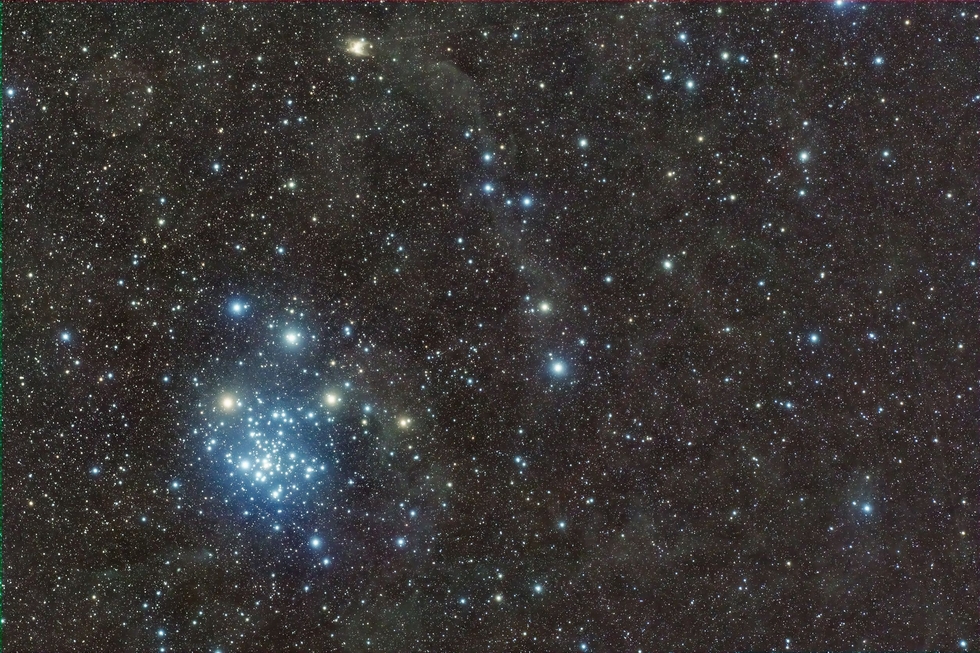A Diamond (NGC 2516) set among the dust of the Constellation of Carina
A Diamond (NGC 2516) set among the dust of the Constellation of Carina
NGC 2516 (also known as C 96) is a very concentrated open cluster in the southern constellation of Carina. it is clearly visible even without the aid of instruments, although its position in the sky means that it can be observed almost exclusively from the southern hemisphere of the Earth. To the naked eye, this bright cluster is easily spotted, about three degrees southwest of the bright star ε Carinae; It appears as a triangular-shaped nebulous spot, with the vertex pointing in the direction of the ε star itself. Sometimes two minute stars are evident in the eastern part. With 10x50 binoculars it already appears partially resolved, but the concentration of stars is such that it is often difficult to split them completely, so that the background continues to appear nebulous; With telescopes with apertures of at least 100mm, the cluster is completely resolved into dozens of components. To the north, NGC 2516 is dominated by a red star, of fifth magnitude.
Its strongly southern declination means that this cluster is not observable from most of the inhabited regions of the northern hemisphere, such as Europe and almost all of North America; from many regions of the southern hemisphere, on the contrary, it is circumpolar presence. The best time to observe it in the evening sky is between December and May
Its strongly southern declination means that this cluster is not observable from most of the inhabited regions of the northern hemisphere, such as Europe and almost all of North America; from many regions of the southern hemisphere, on the contrary, it is circumpolar presence. The best time to observe it in the evening sky is between December and May
SPECIFICATIONS
Telescope
AUS-2-CMOS
Camera
QHY 600M
Location
HEAVEN'S MIRROR OBSERVATORY, AUSTRALIA
Date of observation
09-10- October 2024
Filters
LRGB
Processing
Pixinsight and Photoshop
Credits
Credit Sauro Gaudenzi / Data Telescope Live


